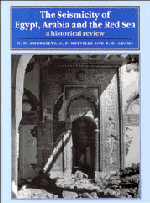Preface
Published online by Cambridge University Press: 18 December 2009
Summary
Collecting earthquake records can be like collecting stamps, or butterflies, or rare books – a harmless pastime, or an obsession. Different interests have contributed to producing this book. First, the scientific urge to accumulate, to map and to quantify the reported effects of past earthquakes. In addition, the fascination of the texts themselves, not only for what they record, but why and how they did so. Then there is the true collector's obsession for the most accurate, up to date and comprehensive catalogue of the trophies jealously acquired from years of bibliographical detective work and weeks of numerical calculation.
One problem with the collector's mentality is that the work of acquisition never stops. The greatest earthquake hoarder of the last century, Alexis Perrey (d. 1882), got round this by publishing regional and global catalogues, constantly updated by supplementary lists. This resulted in an unwieldy output spanning four decades. Modern publishing conditions, as well as the objectives of a modern earthquake catalogue, make this solution impracticable, and the present work represents both the culmination and the temporary interruption of a long-term process.
The immediate origins of the book lie in a research project carried out by the Civil Engineering Department at Imperial College, London, for the Saudi Arabian National Centre for Science and Technology (SANCST), at the King Abdulaziz City for Science and Technology in Riyadh (KACST), between 1985 and 1988. The report arising from this research project on ‘The Seismicity of Saudi Arabia and Adjacent Areas’ was not widely circulated.
- Type
- Chapter
- Information
- The Seismicity of Egypt, Arabia and the Red SeaA Historical Review, pp. xi - xivPublisher: Cambridge University PressPrint publication year: 1994

